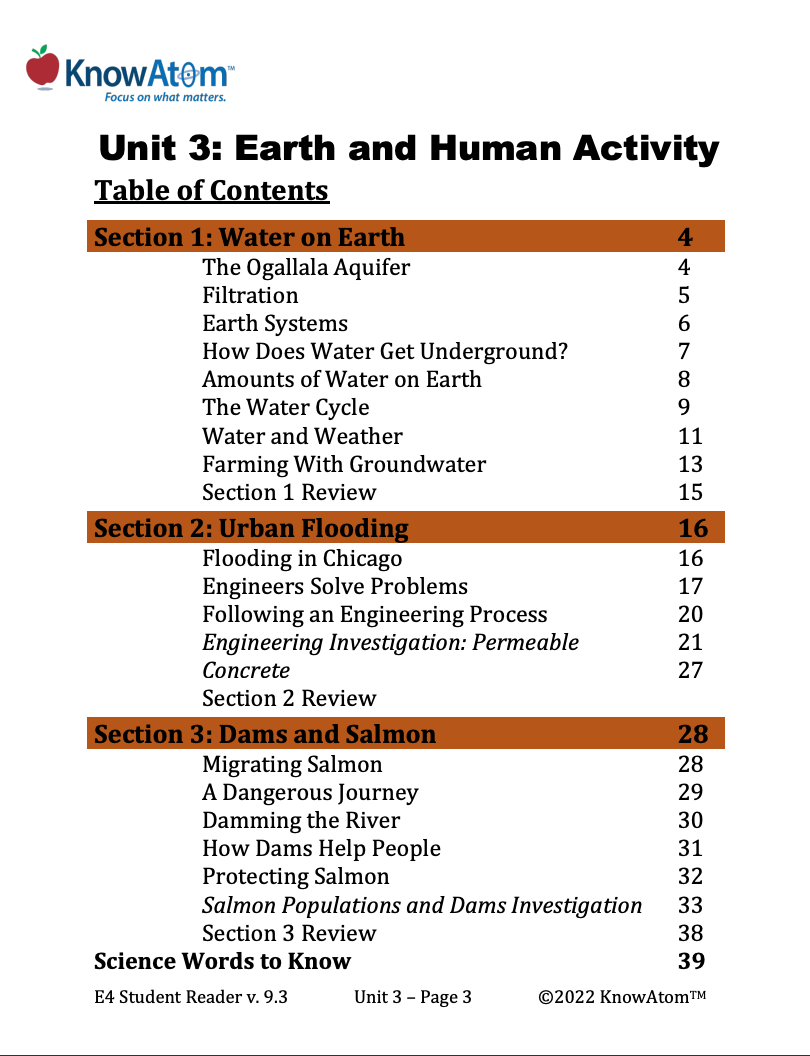
In this unit, students explore the science phenomena of Earth systems by studying aquifers, comparing the ability of different Earth materials to hold water. In this lesson, they build on that knowledge to engineer permeable pavement that can solve the problems of urban flooding and water pollution. This page showcases key components of this lesson.
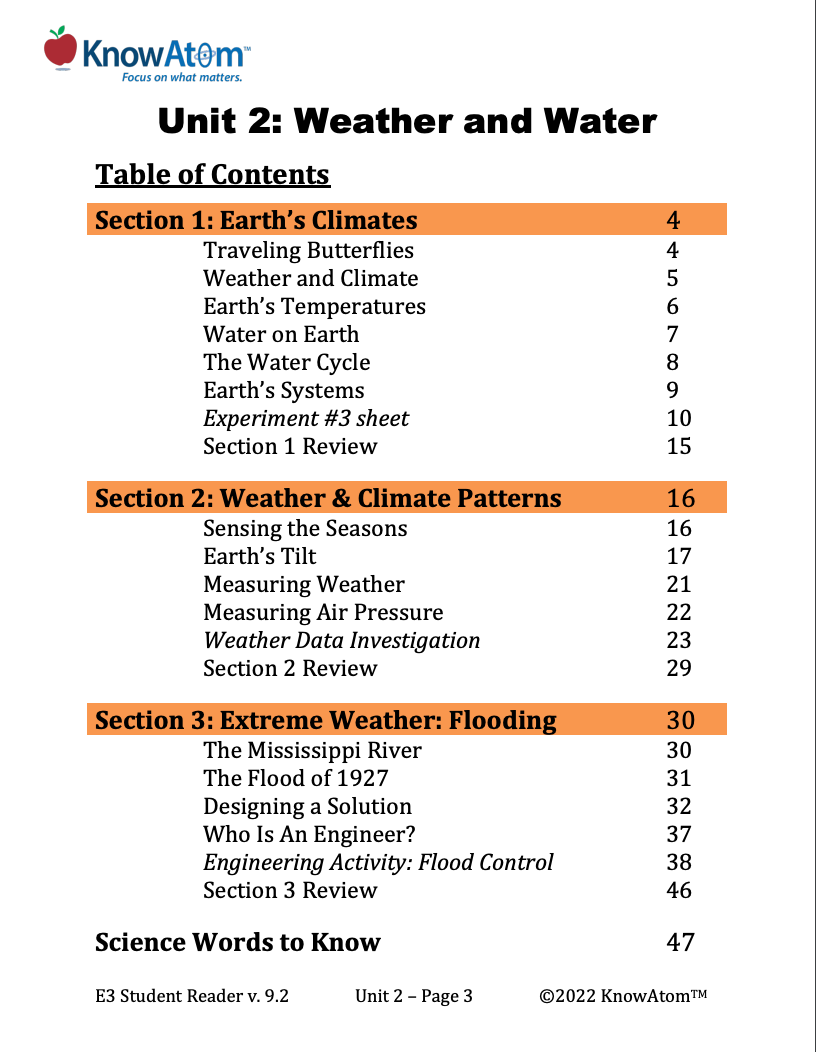
In this unit, students discover how the sun provides light and heat to Earth and how the water cycle influences weather and climate. Students analyze weather patterns in specific regions during a particular season. They then use that knowledge to study the effects of extreme weather on humans, evaluating solutions to protect against those effects.
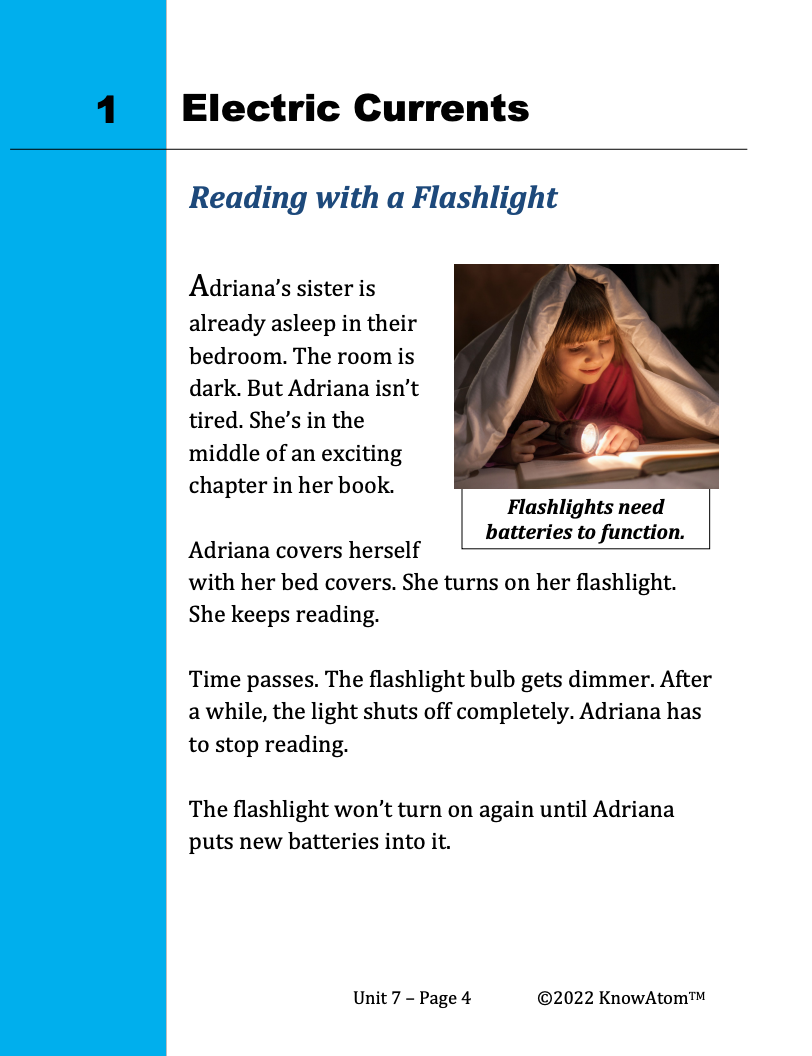
In this unit, students explore the science phenomena of how energy is transferred in a circuit to do work. In this lesson, students figure out the phenomena affecting the left and right movement of an electric car. This page is a high-level extract of this lesson.
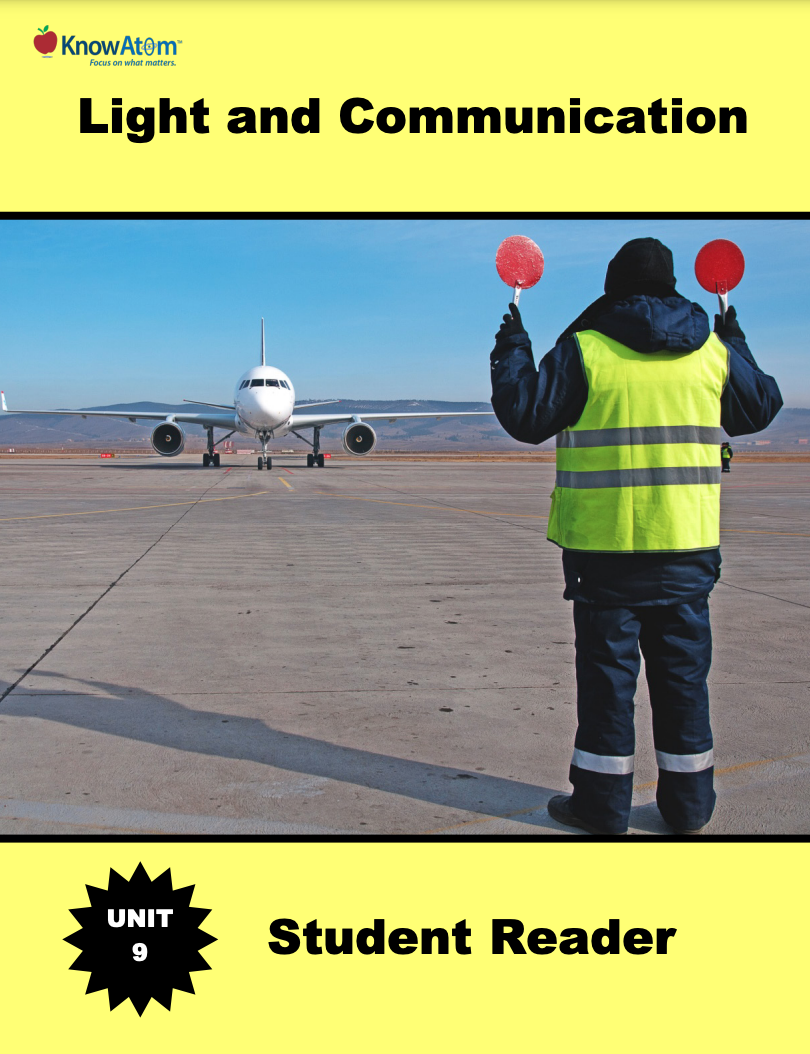
In this unit, students build on what they know about the science phenomena of energy transfer to focus on information transfer and how different technologies use patterns of sound, light, or numbers to transmit information. This page showcases key components of this lesson.
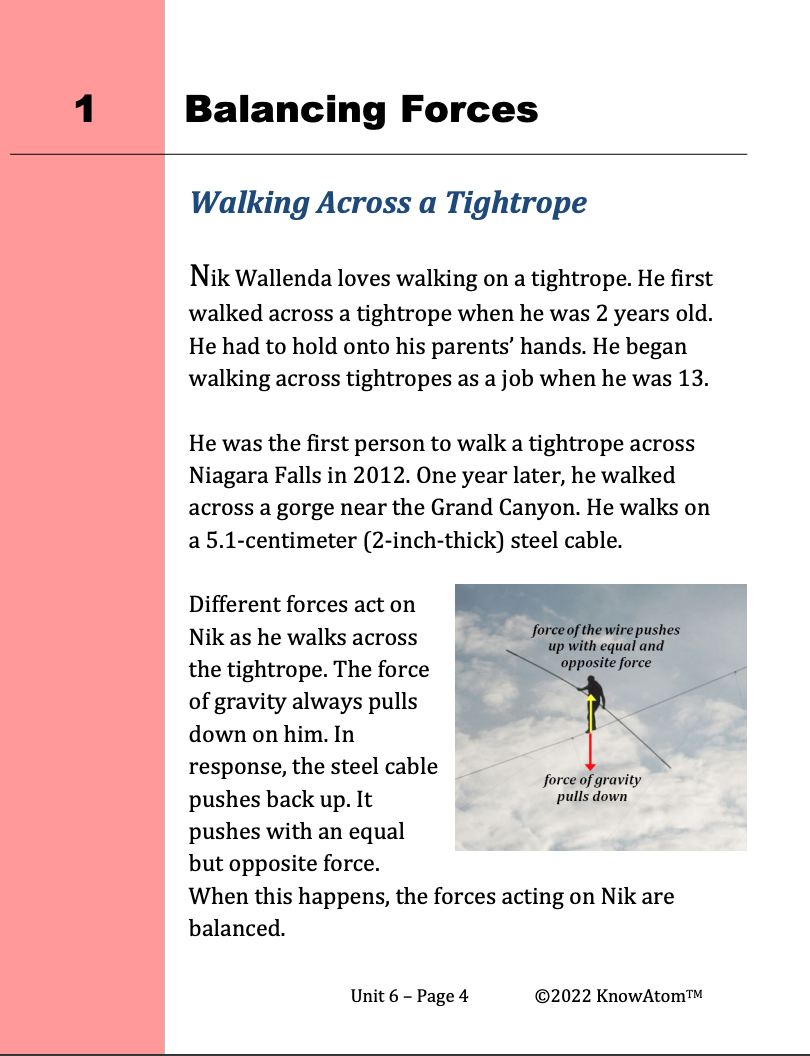
In this unit, students analyze the science phenomena of different forces that can act on all structures. They begin by exploring how forces act on different materials and shapes. They then use what they know about forces to design a skyscraper prototype in this lesson, evaluating how their design relates to the ability of the skyscraper to withstand the weight of the structure and the people on it, as well as the force of wind.
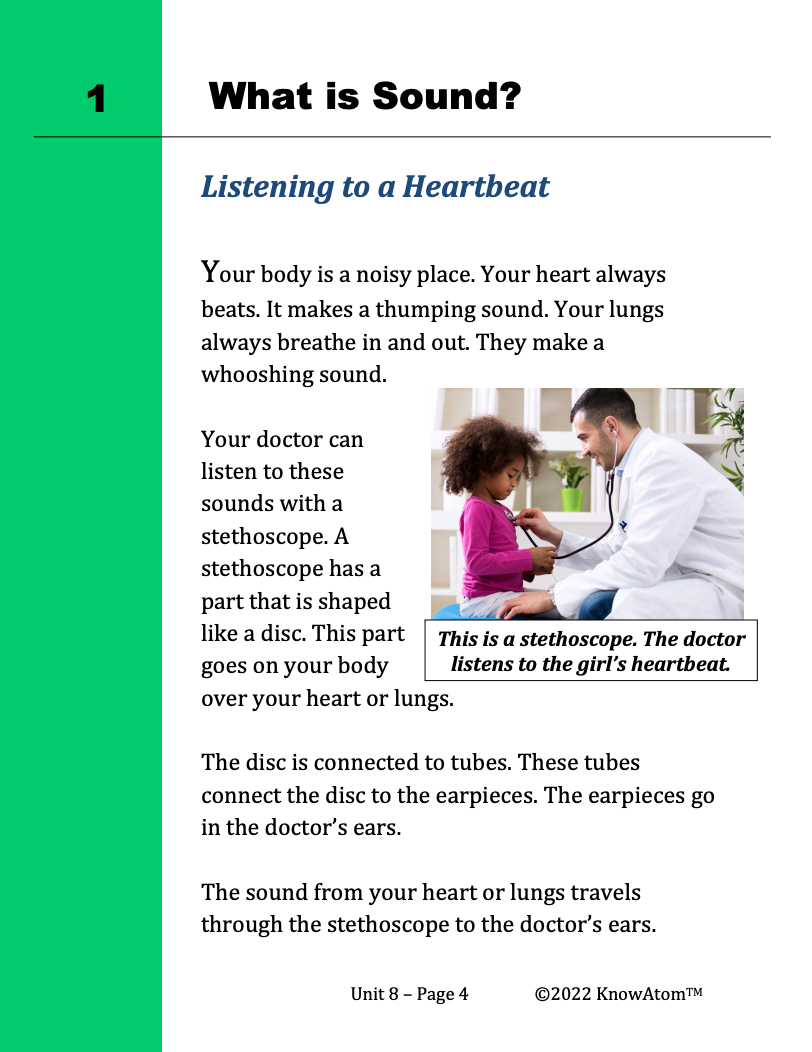
In this unit, students analyze the science phenomenon of how sound is a form of energy that travels through vibrating molecules. They test whether sound travels through both liquid and solid mediums and observe how sound makes sand particles vibrate. In this lesson, students apply their scientific knowledge of sound to an engineering challenge.
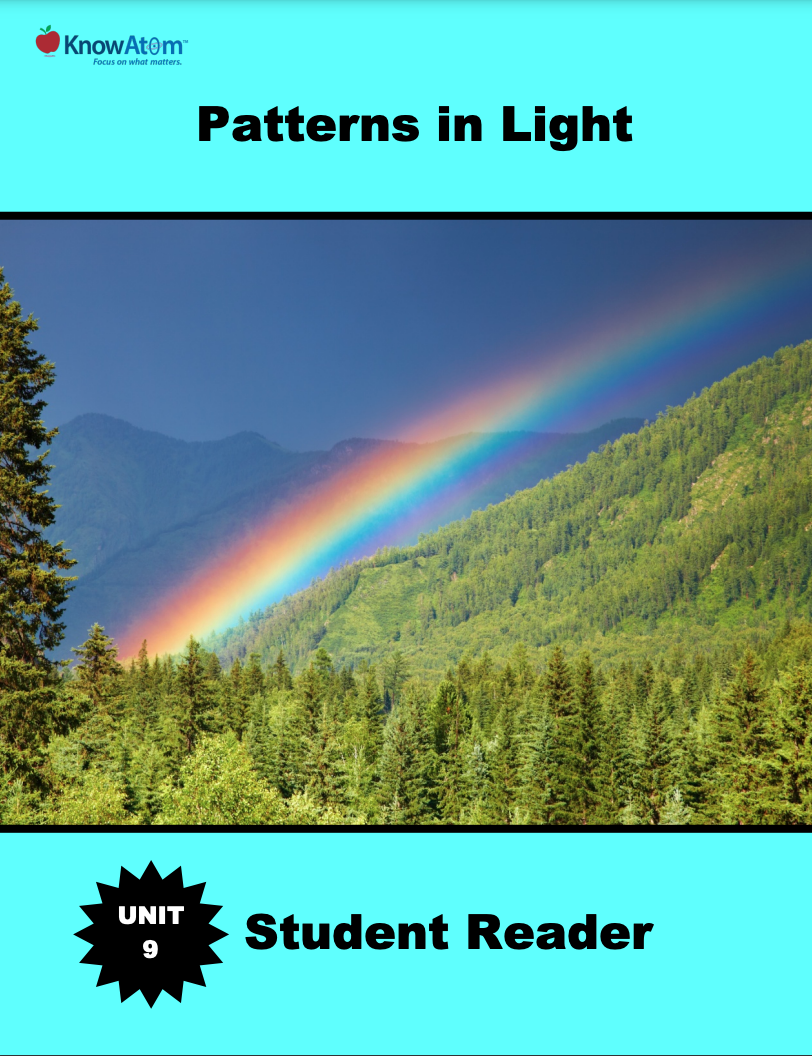
In this unit, students focus on the science phenomenon of light energy, investigating how it travels in a straight line and interacts with matter. Students apply their knowledge to design a prototype with mirrors and water that creates rainbows. This page showcases each component of the lesson.
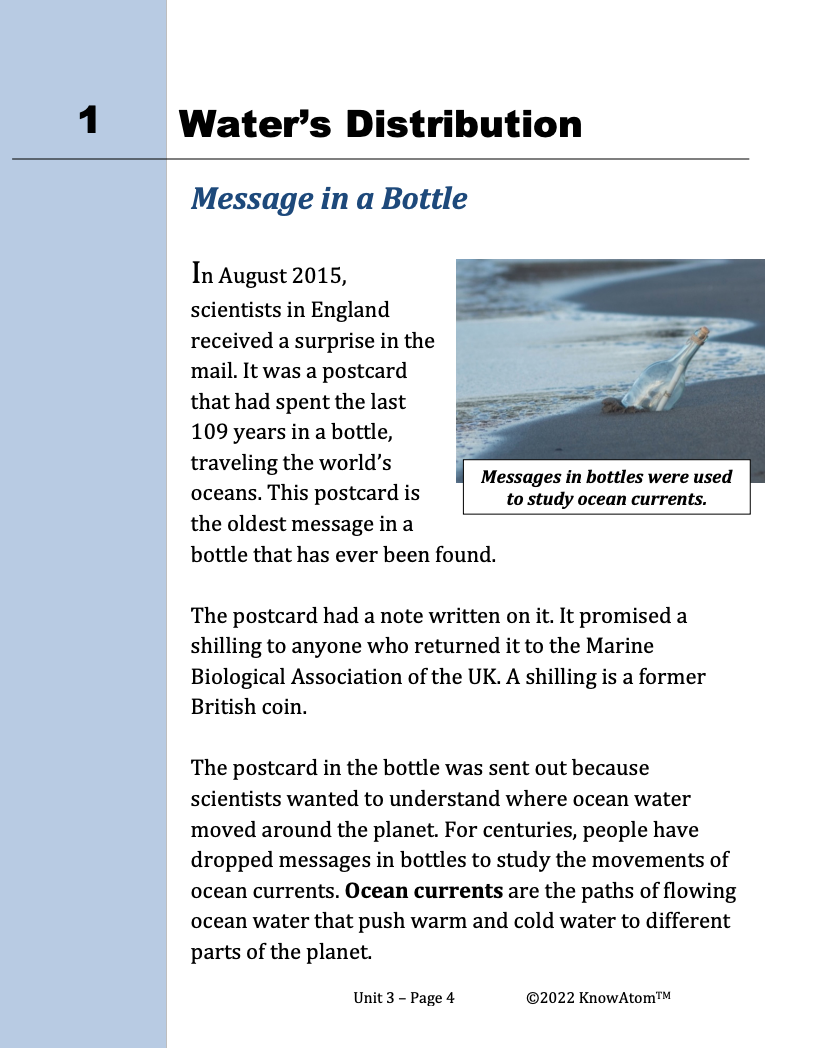
In this unit, students figure out phenomena of Earth’s interacting systems, focusing on how the hydrosphere interacts with and is influenced by the other systems. In this lesson, students apply their scientific knowledge of Earth’s water system to engineer water filtration devices to figure out how to reduce the impacts of water pollution on the environment. This page provides an overview of key aspects of this lesson.
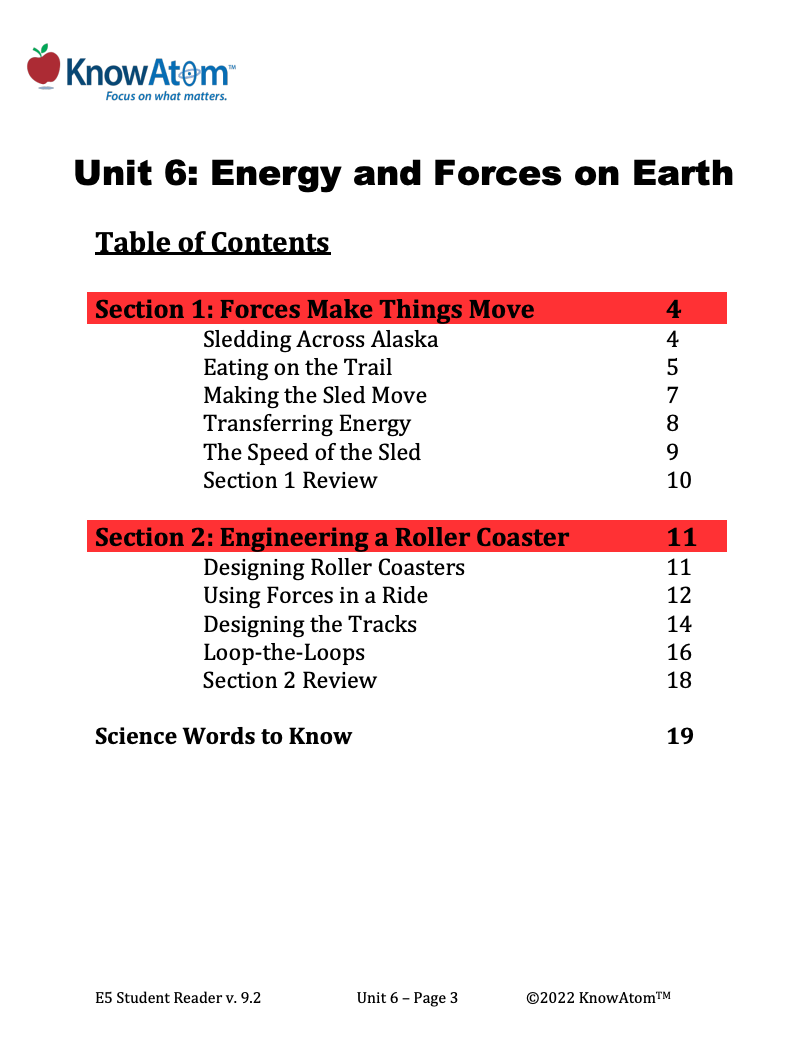
In this unit, students use sleds and roller coasters to explore the relationship between energy, forces, and motion. In this lesson, students apply what they know about energy and forces to engineer a roller coaster. This page is a high-level extract of this lesson.
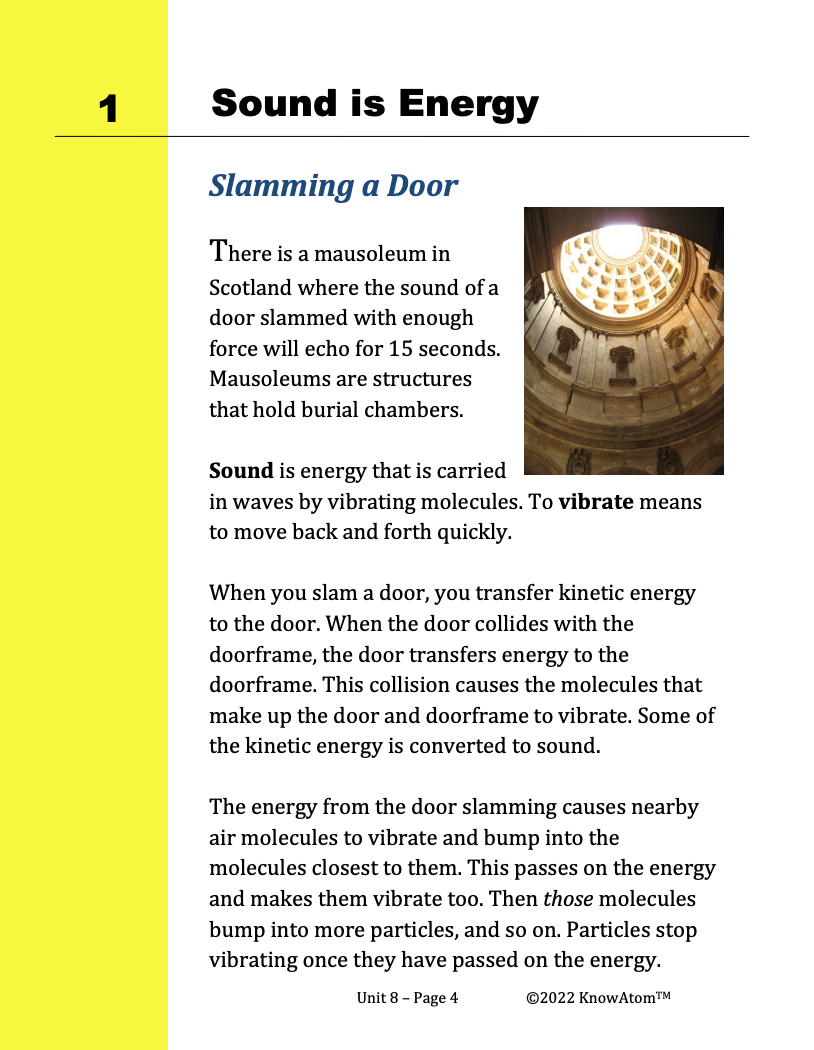
In this unit, students focus on how sound energy is transferred from one place to another in waves. In this engineering lesson, students apply what they have learned about sound energy to design a sound absorbing wall. This page highlights each component of this lesson.
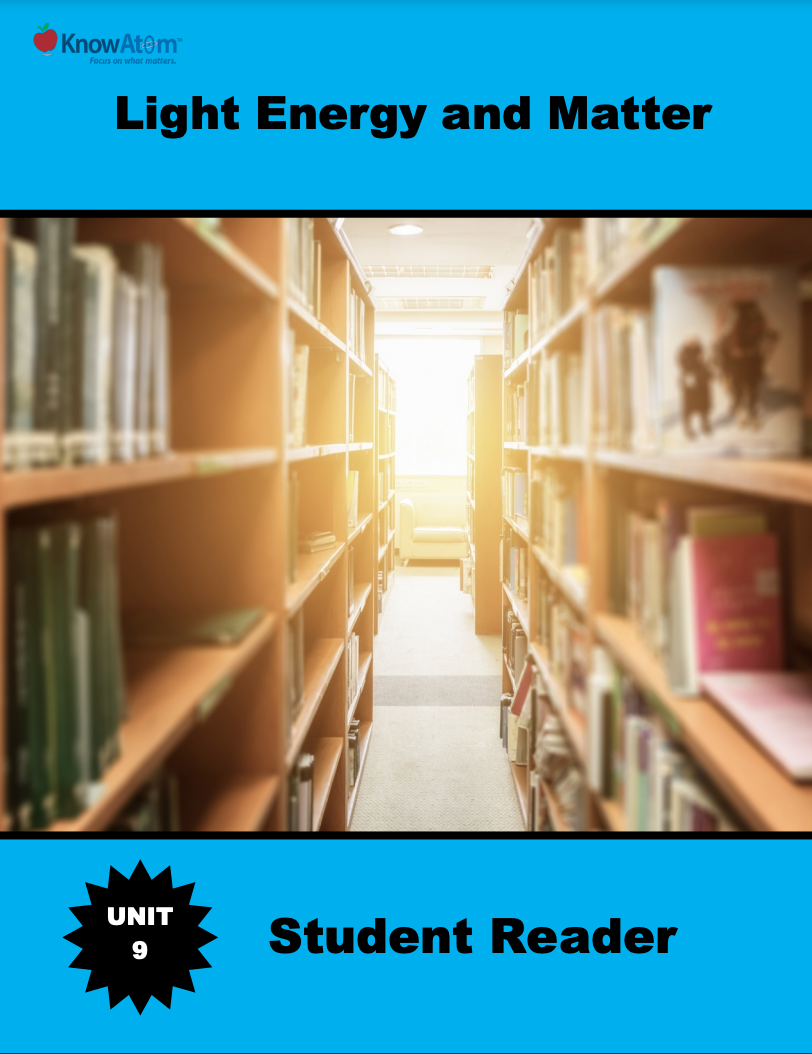
In this unit, students focus on light energy, investigating the science phenomena of how light moves when it interacts with different kinds of matter. Students use scientific knowledge about light to engineer a device that uses mirrors to redirect light. This page is a high-level extract of this lesson.
Standards citation: NGSS Lead States. 2013. Next Generation Science Standards: For States, By States. Washington, DC: The National Academies Press. Neither WestEd nor the lead states and partners that developed the Next Generation Science Standards were involved in the production of this product, and do not endorse it.
